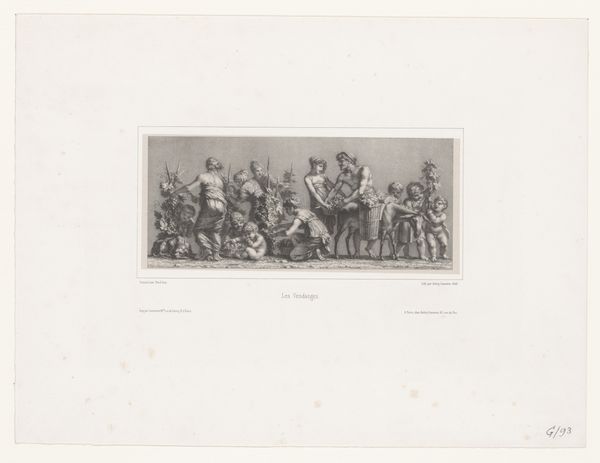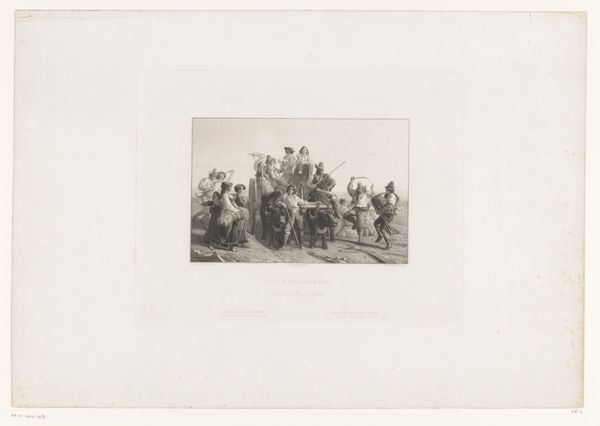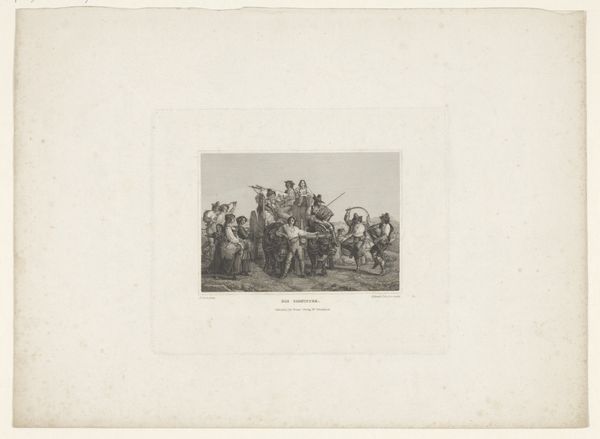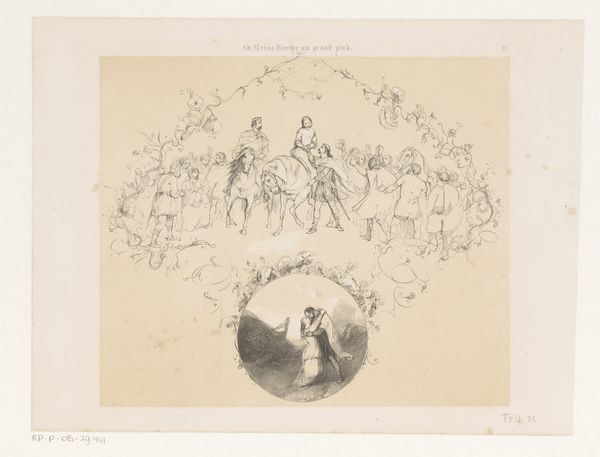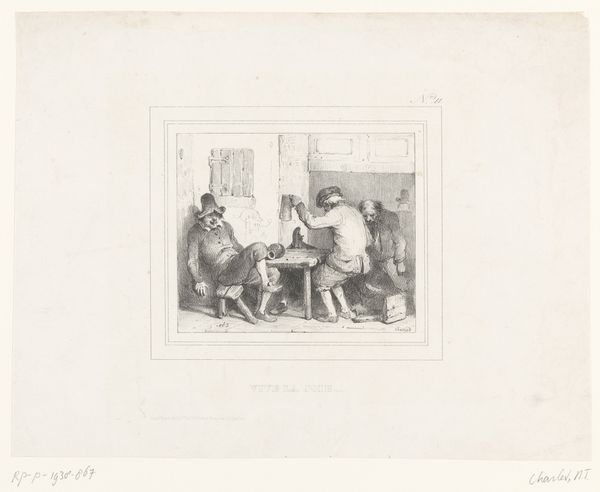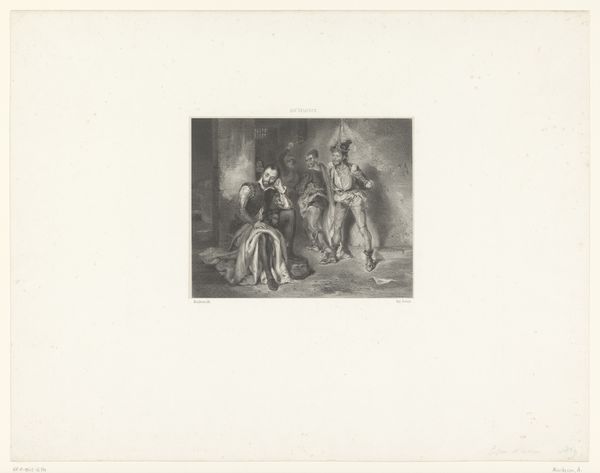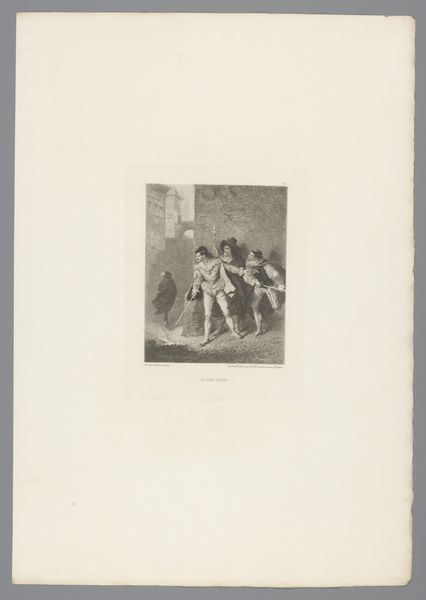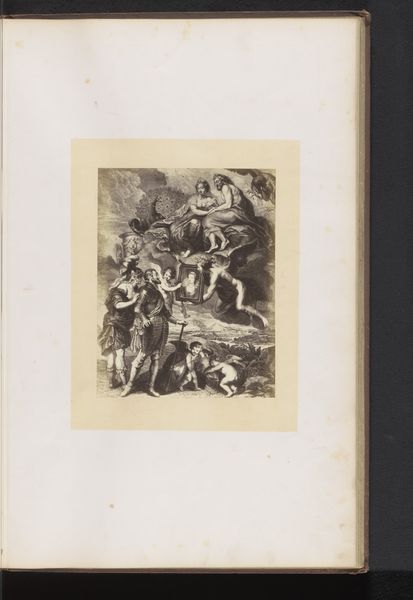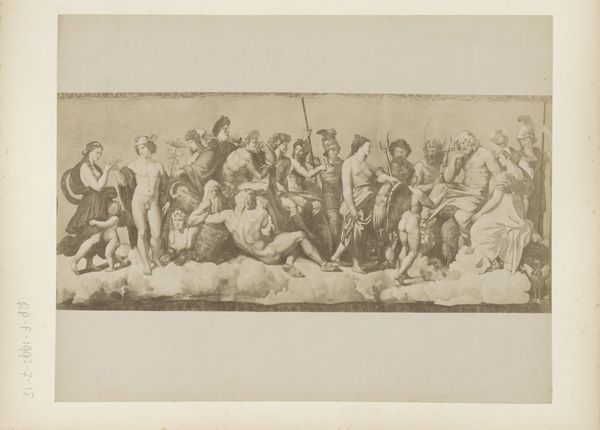
Zeven kinderen met landbouwwerktuigen en muziekinstrumenten 1839 - 1892
0:00
0:00
print, engraving
# print
#
landscape
#
figuration
#
genre-painting
#
engraving
Dimensions: height 166 mm, width 311 mm
Copyright: Rijks Museum: Open Domain
Editor: Here we have “Seven Children with Agricultural Tools and Musical Instruments,” made sometime between 1839 and 1892 by Johannes Sonnenleiter. It’s currently held at the Rijksmuseum and rendered in engraving. It feels almost like a frieze, doesn’t it? With the children all in profile like that, parading across the image. How do you interpret the composition? Curator: It’s fascinating how Sonnenleiter utilizes line in this engraving. Note the rhythmic repetition of the figures and the instruments they carry. It creates a strong sense of movement, doesn't it? And consider the use of light and shadow – how does the engraver define form and space? Editor: It is striking how linear it is. Everything's clearly delineated, with very little blending. But what is it that gives a sense of depth, even without strong shading? Curator: Consider the relative size and position of each child. Overlapping is key. And how would you assess the effect of using strictly horizontal orientation in the engraving? Does that affect your experience of the work? Editor: The horizontal format makes them seem to be marching, moving left to right, or across a stage almost. And I see the subtle size variations now, creating that perspective. I wouldn't have noticed them independently. Curator: Precisely. The horizontal format in conjunction with these considerations contributes to the overall narrative suggested by the composition. The formal elements create that directional reading. What is your overall takeaway? Editor: I guess, analyzing its form so closely, I can see how the very precise choices in line and form create a specific feeling and directional read that really draws me in. Curator: Exactly, and by focusing on Sonnenleiter’s technique we discover meaning we might otherwise have missed.
Comments
No comments
Be the first to comment and join the conversation on the ultimate creative platform.



